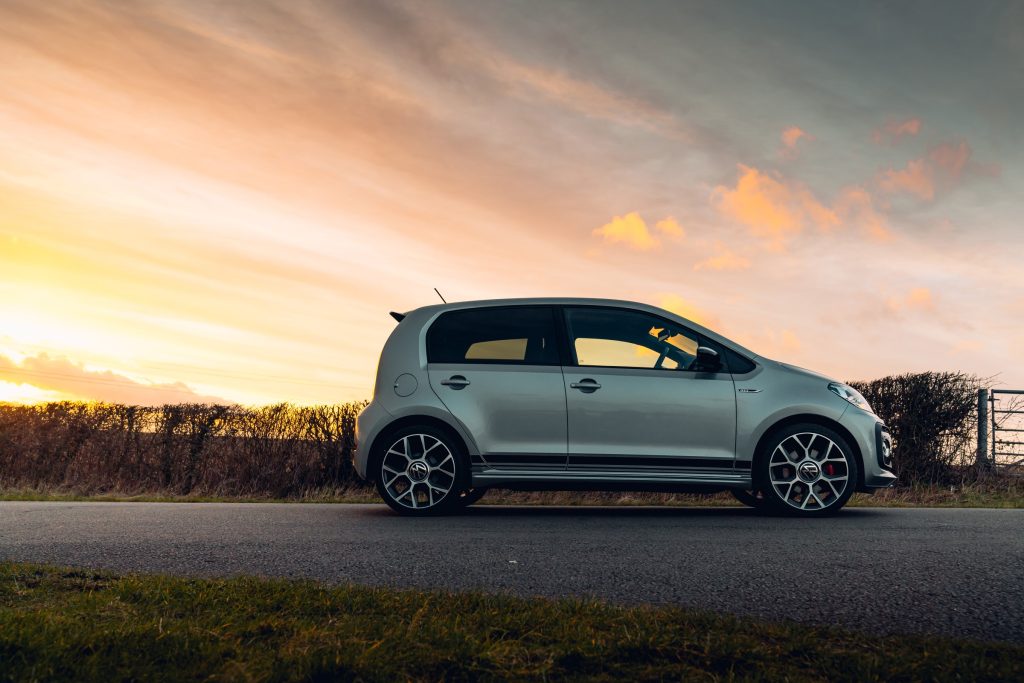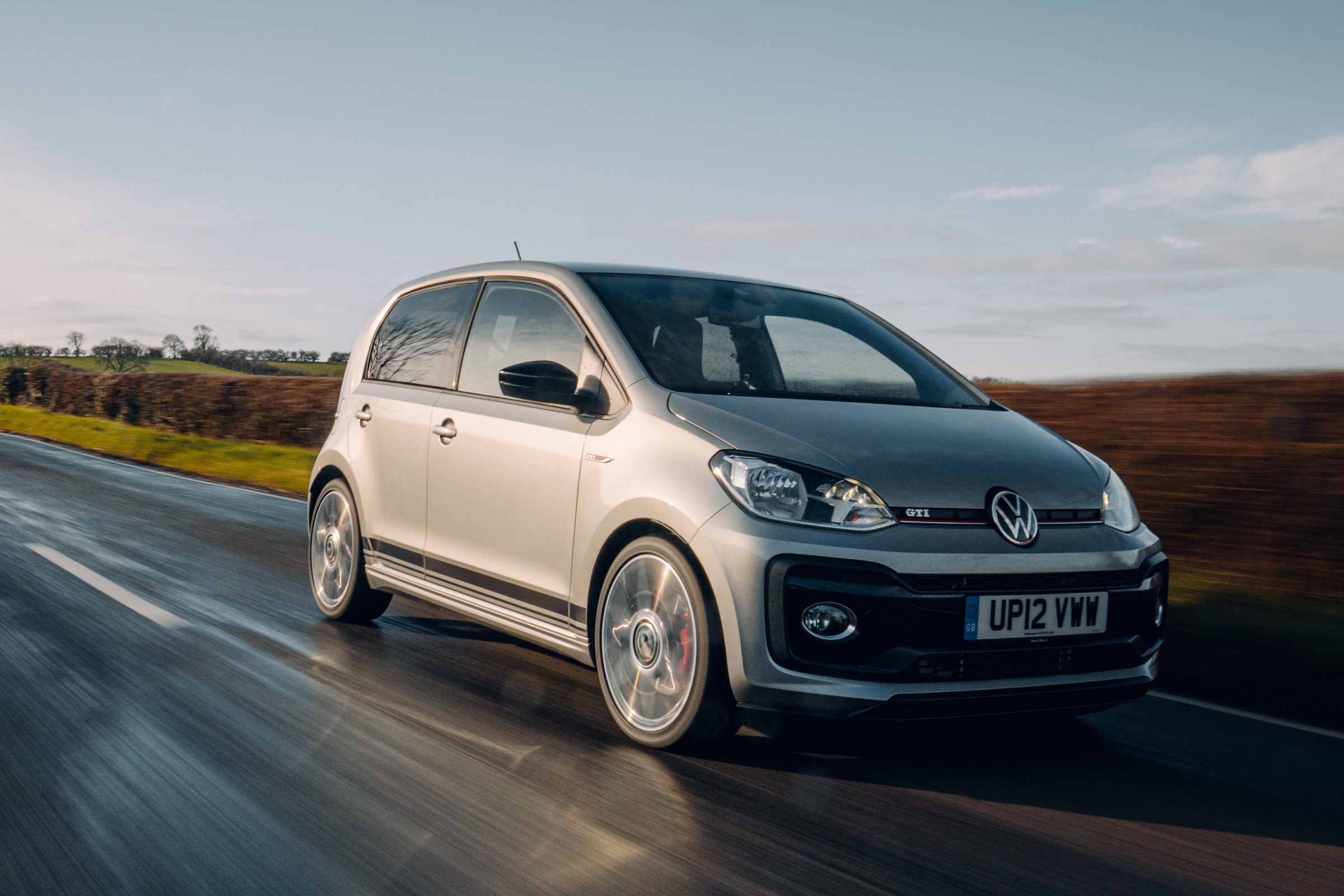They don’t make cars like the Volkswagen Up GTI anymore. Literally. Not a single manufacturer offers a junior hot hatch any longer, the kind of car in which hundreds of thousands of enthusiasts first cut their performance-car teeth. That rite of passage, trading your slow starter supermini for something hotter, without buckling under the weight of insurance or fuel costs, is coming to an end.
The final holdout was Suzuki, which has only just pulled the Swift Sport off sale as it introduces a new version of the base car. There don’t seem to be any plans to replace it. But fun though the Swift Sport was, or indeed still is, it was also probably a bit too expensive, a bit too senior, to be considered a real starter-hatch. The same goes for the Abarth 695, still clinging onto life, but at £23,000 (the same as the Suzuki bowed out at), it’s hard to imagine anyone in their late teens and early 20s being able to conjure up that much cash.

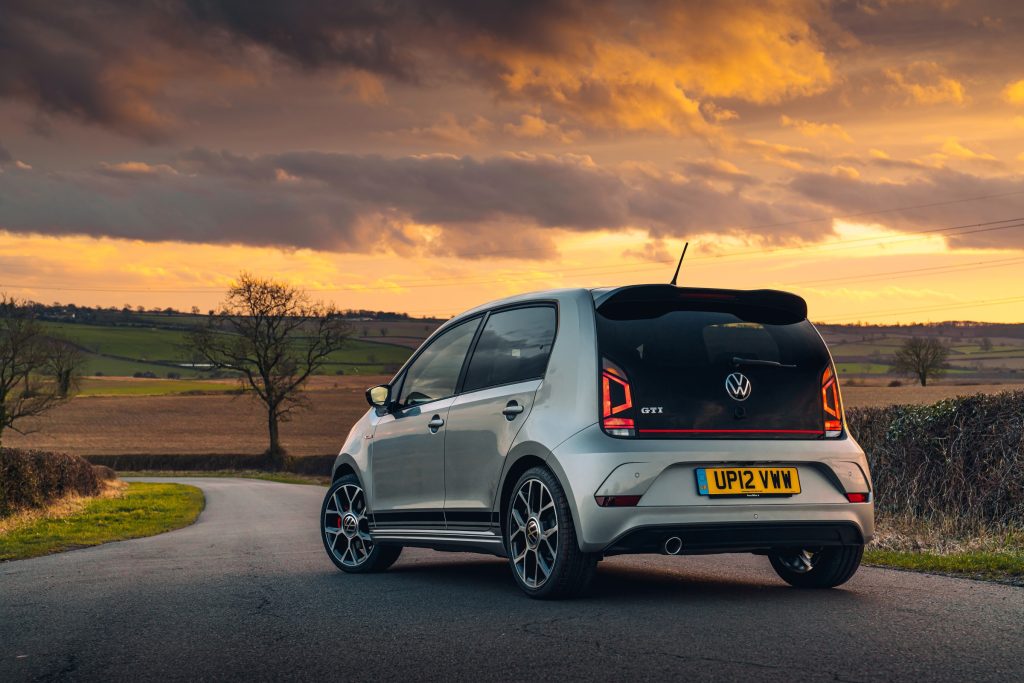
The £14,000 that Volkswagen charged for its Up GTI in 2017, while hardly pocket change, was much more like it though. Even inflation-adjusted, given everything that has happened in the past seven years, that still comes to just over £18,000 – five grand less than the Abarth and lower than all but the cheapest modern superminis. Yet it’s still vaguely within the realm of affordability with favourable monthly payments and some careful budgeting.
Cheap doesn’t automatically mean cheerful, but the Up GTI was both. The regular Up launched way back in 2011 was already a refreshing little car, strangely carefree for a VW product (there must have been something in Wolfsburg’s water back then, since the reborn VW Beetle also arrived in 2011). It was light, simple, neatly styled, and felt peppy and nimble as small cars should, yet relaxed and refined at motorway speeds, as small cars rarely are.

The year the Up was launched, Volkswagen presented a GTI concept at the Frankfurt motor show, alongside other, madder concepts like a beach buggy–styled Buggy Up and a Fiat 500 Jolly–style beach car with wood panelling. But it would be six years until the GTI actually hit the road.
VW judged it to perfection, at least in terms of specification. For your £14K you got a car that weighed five bags of sugar under a tonne and had a turbocharged version of the regular Up’s 1-litre triple, making 113bhp. That’s right in the ballpark of the original Golf GTI, and as plenty noted, the Up was already similar in scale to the original Golf.
The Up’s exterior got a GTI remake with new front and rear bumpers, bold alloy wheels, and the traditional GTI red stripe through the grille, while the cabin was dressed up with “Jacara” tartan-trimmed seats, a black-into-red fade on the dashboard panels, and a three-spoke leather-rimmed steering wheel nicked from the much more expensive Golf GTI.
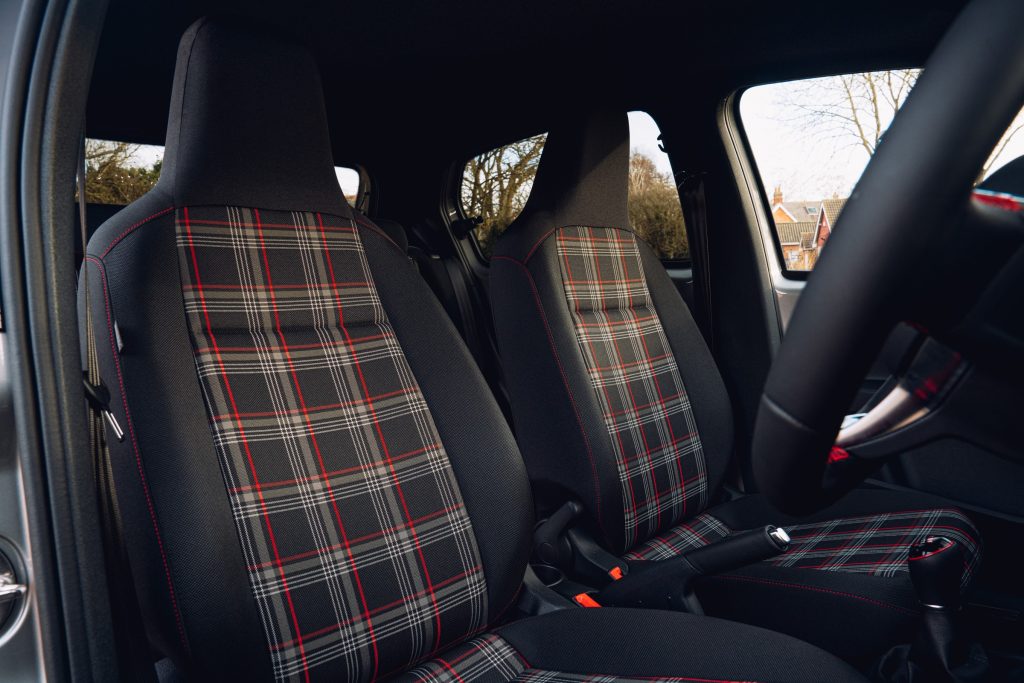


To drive, the GTI was a hoot. Oh sure, it wasn’t perfect – the suspension sometimes felt like it was struggling to contain the motions of those outsized wheels on rougher roads, and it doesn’t playfully rotate with a lift of the throttle like the most engaging hatches – but here was a hatch you could drive hard without feeling antisocial. It had enough grip to carry speed through turns, but not so much you’d exit a corner feeling like you’d got nowhere near the car’s potential. Those 113 turbocharged horses felt like just enough to punch you down the next straight, too, yet back off and the thing would do a scarcely believable 60mpg.
As a result, the Up GTI was one of the last cars, if not the very last, to really give you those “driving a slow car fast” sensations that entry-level hatches used to offer until the mid-00s or so. You know, cars like the Saxo VTS, the Fiesta XR2, the MINI Cooper, and the 205 XS. Several years back, I included an Up GTI in a test of some of these older hatches and their more modern contenders, and the Up was the only modern car that even got close to delivering the same experience as the Peugeot 106 Rallye and Fiat Panda 100HP representing the old guard.
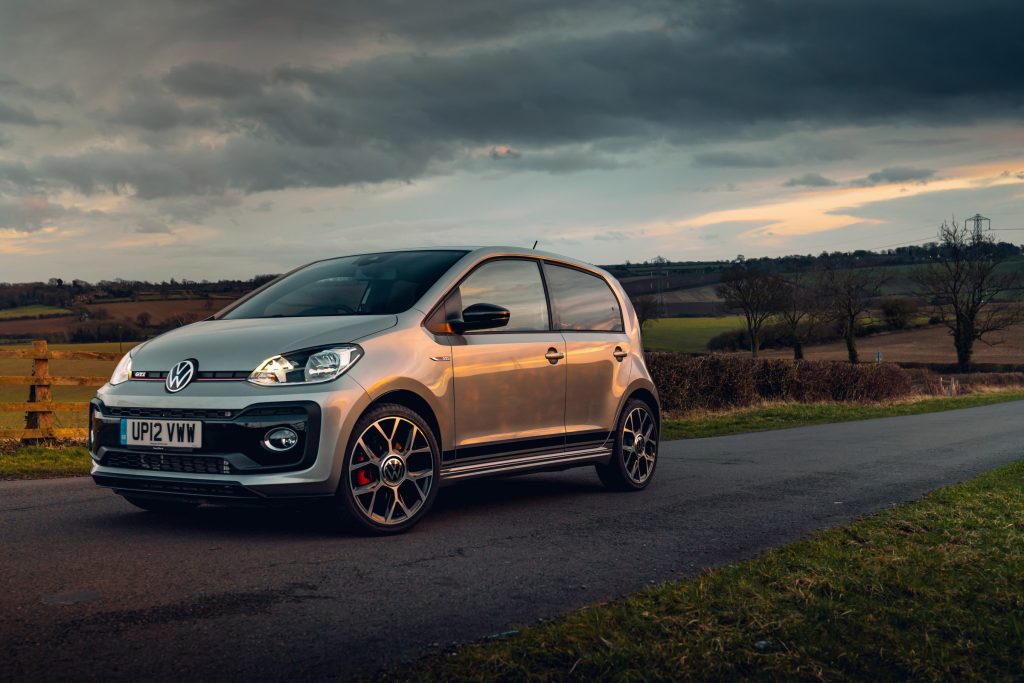
The biggest problem with the GTI is that Volkswagen seemed curiously unwilling to even sell it. Order books were absolutely packed from the get-go, but the car was unceremoniously pulled from sale in 2019, nominally for emissions reasons. It was reintroduced in 2020 to little fanfare, costing nearer £18,000, and this new higher pricing combined with the car-buying madness that hit post-Covid meant that the earlier cars basically stopped depreciating, limiting their future affordability in the manner of those much-loved older hatches.
It finally fizzled out in 2023, along with the rest of the Up range. Frustratingly, the Up’s VW Group siblings, the Skoda Citigo and SEAT Mii, never got equivalent versions. In a roundtable interview with then-SEAT boss Luca de Meo, the assembled journalists asked him whether there were any plans for a Mii Cupra. In a statement that seemed somewhat hard to believe given there was a one-year waiting list for the Up GTI at the time, de Meo claimed there was no demand.
And yet, demand is still sky high for the limited number of used Up GTIs available. It wears the most iconic badge in the hot hatch ecosphere, mostly delivers as a driving experience, and there seems to be little chance of it being adequately replaced any time soon. Small electric hot hatches are already here (the Abarth 500 Electric) and on the way (the Alpine A290), but sub-tonne kerbweights and sub-£20K prices are a pipe dream. As the last of its breed, the Up GTI is surely a future classic.
